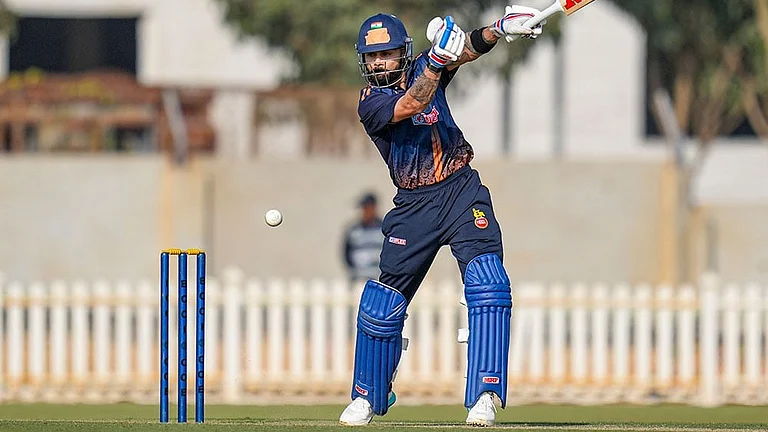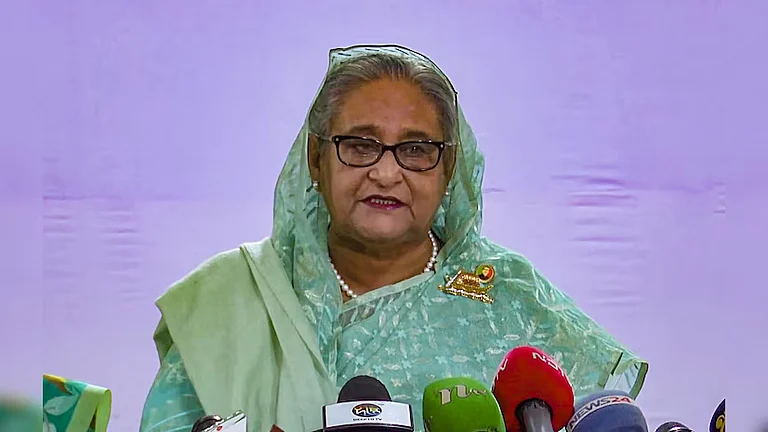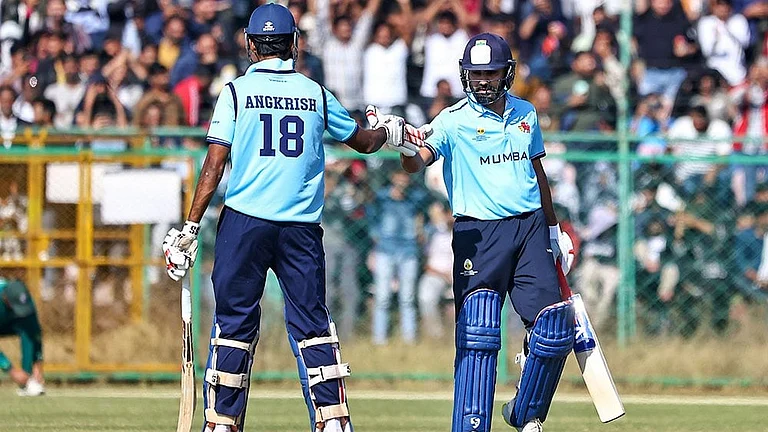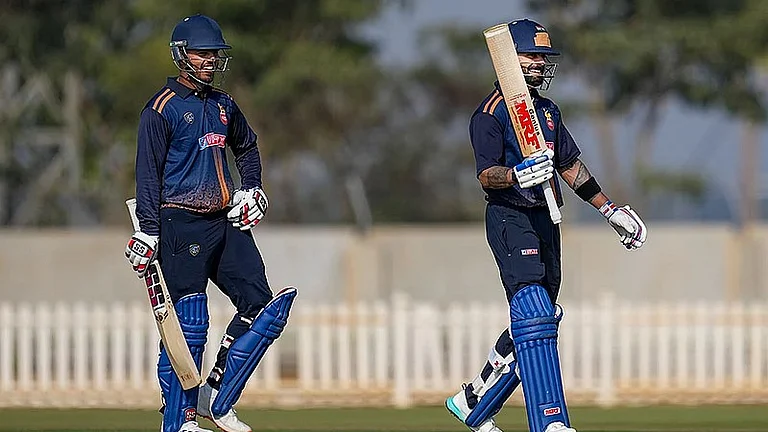Myths form an integral part, the core, of any culture, religion or civilisation and play a foundational role in their imagined lives. They are traditional tales, heroic, sometimes epic in proportion; and they endeavour to explain the mysteries and secrets of the created world. Their inherent cosmic subject matter means it is offered up for various interpretations, ranging from the literal to the symbolic. Pankaj K. Singh in her book Re-presenting Women writes, “Fluid in time and space, the mythical narrative brings together the world of mortals and gods over a span of time incomprehensible by rational causality, even as it encompasses the miraculous and the improbable.”
No wonder, this fluidity and the elements of miracle and improbability thread myths with layer upon layer of meaning that permeates down into human consciousness over the ages and that have fascinated scholars for ages, challenging them to unravel a novel understanding of what they convey. The universality of human experience also provides many myths from cultures far distanced in time and space with an uncanny similarity, which has intrigued comparative mythologists who have endeavoured to elucidate them in various ways. Devdutt Pattanaik’s latest book, Olympus: An Indian Retelling of the Greek Myths, is a pathbreaking attempt in this direction; pathbreaking because it is a pioneering look at Greek mythology through the lens of an Indian perspective.
Devdutt Pattanaik, through his steadily expanding oeuvre, has emerged as a ‘mythologist by passion’ who brings a fresh perspective to Indian myths. His simple, almost conversational diction makes for an interesting and lucid reading. His Olympus is a step ahead, because it presents Greek myths in a very relatable manner—the comparative Indian myths and stories that Pattanaik serves bring them nearer home to the Indian reader. Over the years many Western mythologists have retold Indian myths in their own way, but the reverse was rarely attempted. Devdutt, in his characteristic style of a raconteur, has briefly retold the Greek myths and brought a new, comparative perspective to bear upon them. He asserts at the outset that human experience can be explained through philosophy or mythology, though the latter “creates a more visceral experience, and so appeals to everyone, not just the intellectual”.
Through his Indic prism, Pattanaik sees and explains the similarities and the differences between the two ancient myth systems, the Greek and the Indian. Greek mythology follows a finite linear structure, whereas Indian myth systems, be they Hindu, Buddhist or Jain, follow a cyclic pattern. Greek mythology is based on the premise that the world requires change and needs human intervention through the feats and escapades of heroes, whereas Indian mythology avers that the world is constantly in a state of flux and is ever changing with or without human intervention. Pattanaik questions the Western mythologists’ dismissal of Indic worldview as chaos. Citing the “allegory of the cave” he holds that the Indian myth system encourages people to value the ‘sunlight’ outside as well as the ‘shadows’ inside—“What is sunlight for some people will be shadows for others”, he says.

Thus, Indian mythology gives itself up to pluralistic and, at times, contrary interpretations. Objectivity is not held at a premium and subjectivity is accepted as a means of accommodating various points of view in pursuit of knowledge. Pattanaik presents his book with the admission, “I am comfortable with my subjectivity and well aware of my Indian gaze. I do not fear the shadows, but I do not claim the sunlight either.” However, in his grappling with the sunlight and the shadows, he succeeds in giving the reader a glimpse of the eternal and universal truth inherent in Greek and Indian myths.
In Prologue: The Greek Conquest, Pattanaik begins to speak through the all-conquering Greek king, Alexander—the closest a Greek has ever approached mythical greatness—who meets an Indian sage, “a gymnosophist, a naked, wise man”, in order to find answers to his questions. However, he finds the tables turned when, instead of answering, the hermit starts questioning him. Faced with the question as to why he seeks to conquer the world, Alexander replies:
“To be great. To be remembered for eternity. To earn a place with the Gods on Mount Olympus.”
“What is Mount Olympus?”
The rest of the book is the answer that the conqueror turned storyteller gives to the sage. He proceeds to relate the myths of Zeus and Oedipus; Minos and Heracles; Jason and Odysseus; Helen and Aenas with countless other related myths.
In Epilogue: The Indian Headshake, the sage makes the great, battle-weary conqueror face the truths thrown up by his own rendition of the traditional myths. The sage tells him that truth can be arrived at by various paths, but truth can be many-faceted and just because one does not see all parts does not, in any way, diminish them. The hidden facets are there waiting to be explored. One person may see one facet, the other another but as both are part of the same whole, they are bound to have something similar. That is why there are many parallels, though not identical myths, in both Greek and Indian traditions. The mythical Greek river Styx that separates the living world from that of the dead is similar to the river Vaitarni of Indian myths. The difference between the two is that one crosses the Styx only once, but Vaitarni has to be crossed many times because in the Indian belief system, the soul has to live many lives. Alexander himself brings out some of the similarities between the two mythologies when he tells the sage, “Surely, Vishnu on the eagle is like Zeus, as is the thunderbolt wielding Indra, and Shiva who dances wildly is like Bacchus, and Krishna who fights the bulls and lions and multi-headed Heracles. Surely, Kartikye is your Ares and Kama your Eros.”
Pattanaik’s comments on similarities between myths from the two systems are sprinkled throughout the book. Each Greek story is accompanied by a corresponding Indian story or perspective. Thus Surya’s son Revanta is identified with Apollo, Poseidon’s counterpart is Varuna, Hephaestus is similar to Vishwakarma and so forth. However, Pattanaik, speaking through the sage, cautions that it would be a fallacy to see similarities where none exists. In order to really understand the complexities of these myths one has to go beyond the flesh to find the soul; one has to delve deeper than the literal to understand the metaphor.
One must also be careful not to impose identification between these myths. There are bound to be variations and differences because the orientations are different. The Greek system is aimed at bringing out an order out of chaos by controlling and bringing about a change in the world, whereas the Indian system is based on accepting the changing world, because its basic assumption is that human intervention cannot control this change. Again, the divided groups of humans and gods in Greek mythology, one alliance often inimical to the other, has no parallel in Indian mythology.
Structurally, Olympus: An Indian Retelling of the Greek Myths is an easily navigable book. Each Greek myth is accompanied by a box, detailing the correspondence or variance in Indian mythology. Apart from mythical characters, recurring themes and motifs in both systems are also discussed. Pattanaik’s language and style are fluid and comprehensible and his gift of story telling is evident in his ability to catch and hold the reader’s interest. Overall, Olympus is a must-read for those interested in mythology.





















